Abstract
A randomised, double blind, placebo controlled, crossover study of digoxin withdrawal and reintroduction was carried out over two periods of eight weeks each after long term treatment. Forty four patients with stable heart failure in sinus rhythm and plasma digoxin concentrations over 0.8 ng/ml were studied. Their progress was assessed by clinical criteria, by haemodynamic measurements (systolic time intervals and echocardiography), and by pharmacological measurements of erythrocytic sodium pump numbers and activity. After withdrawal of digoxin clinical deterioration occurred in only 25% of the patients. Furthermore, in only 9% of cases was digoxin reintroduction thought to be necessary. There was deterioration in only 11% of the patients during digoxin treatment. Deterioration during digoxin withdrawal was accompanied by changes in systolic time intervals, but similar, albeit smaller changes in systolic time intervals also occurred in patients with no deterioration. Deterioration was accompanied by changes in the pharmacological effects of digoxin on the erythrocytes, consistent with a loss of effect, and these changes did not occur in those who did not deteriorate. The occurrence of deterioration could not be predicted by any clinical, haemodynamic, or pharmacological measurements made before withdrawal.
Full text
PDF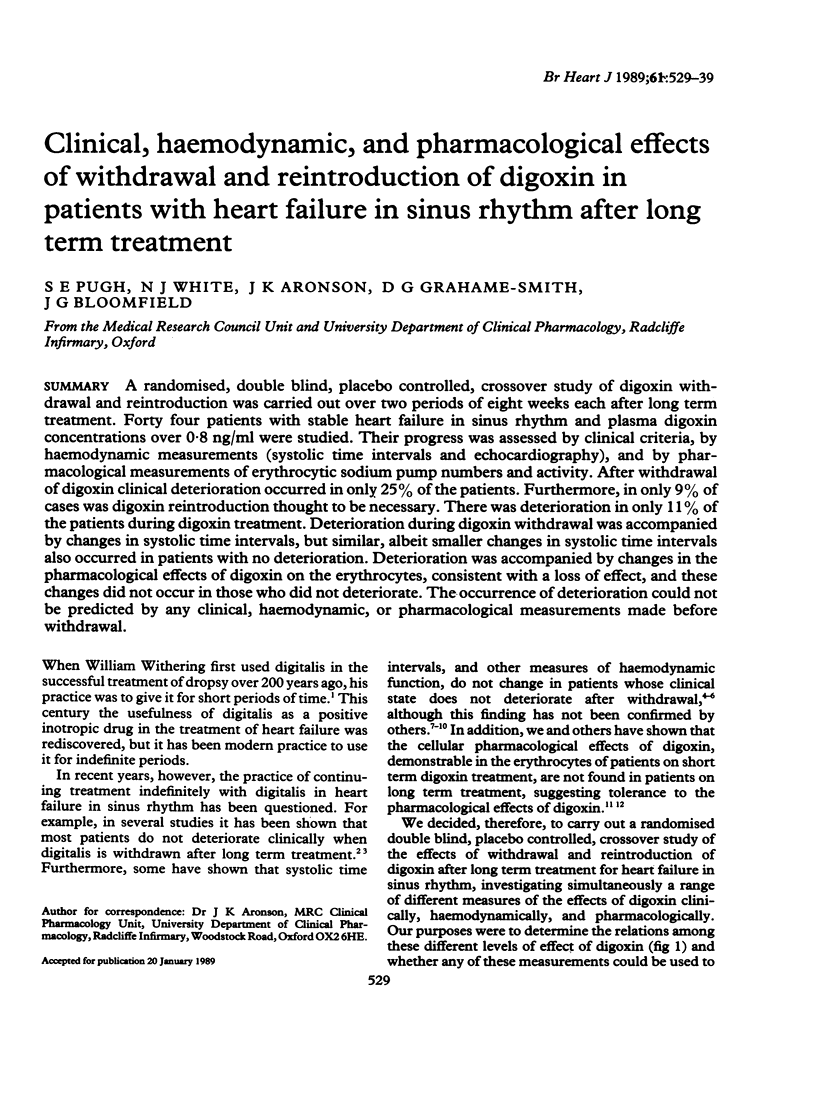
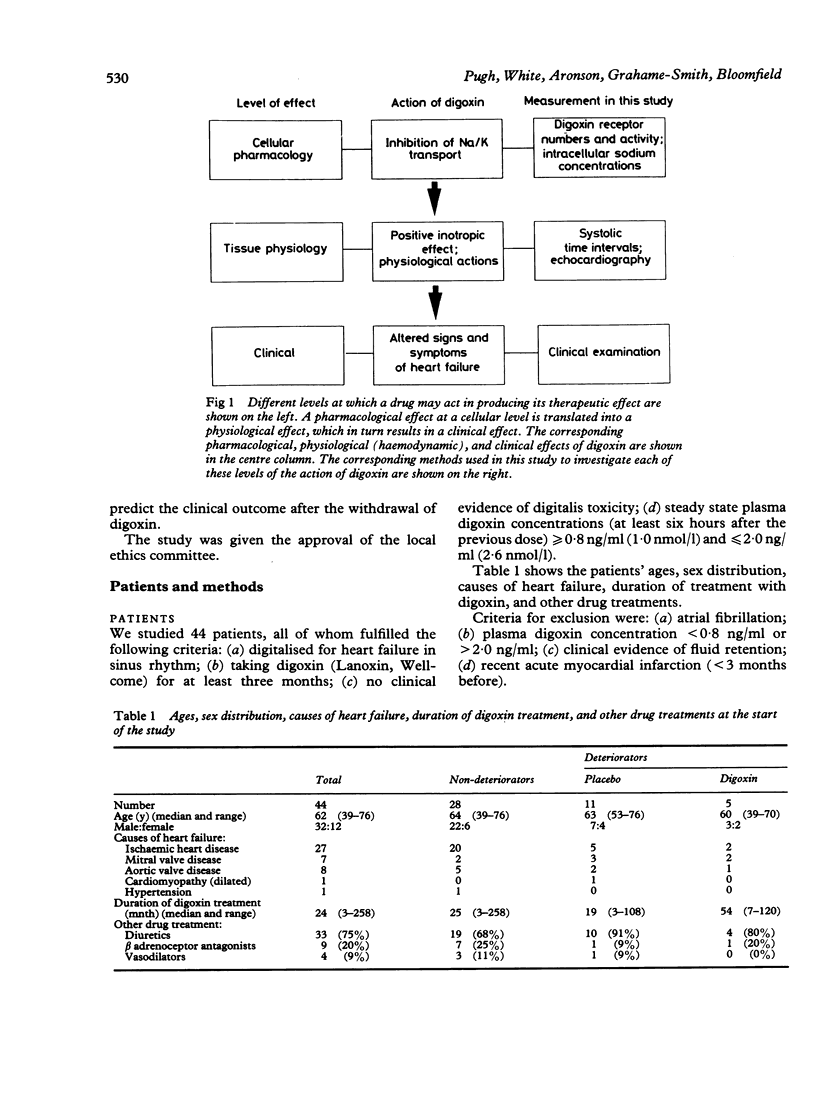
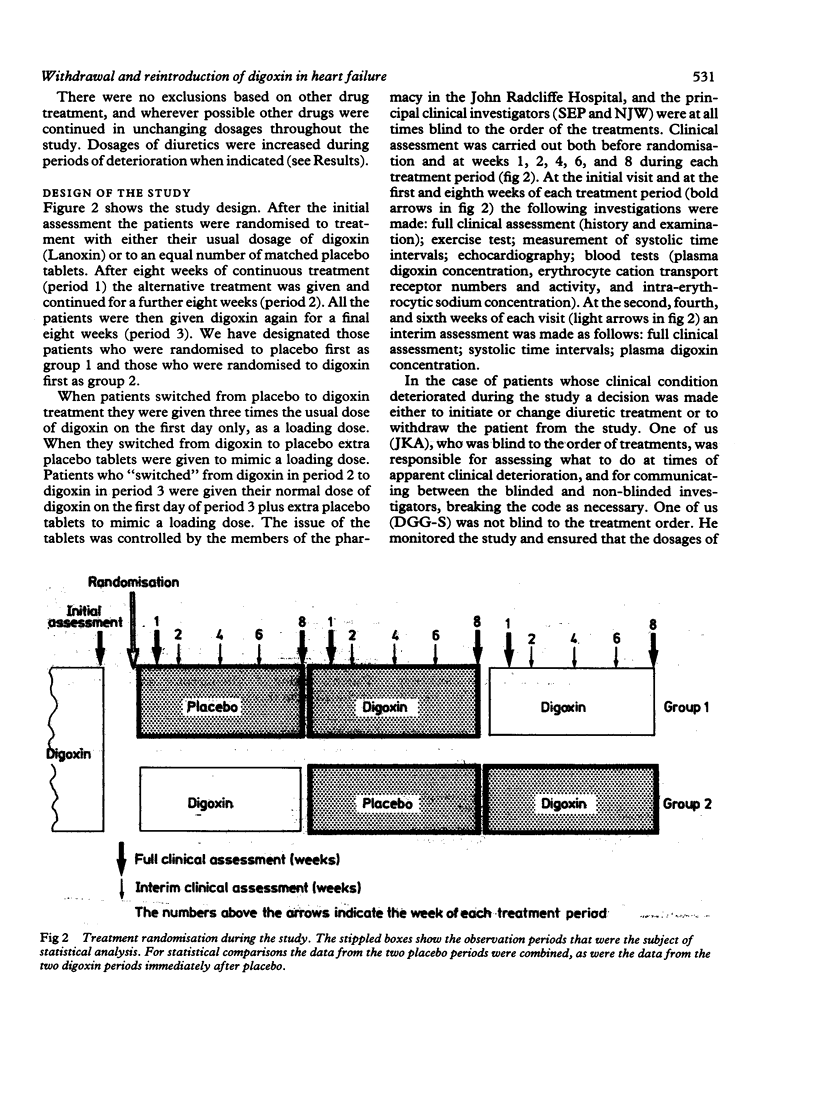
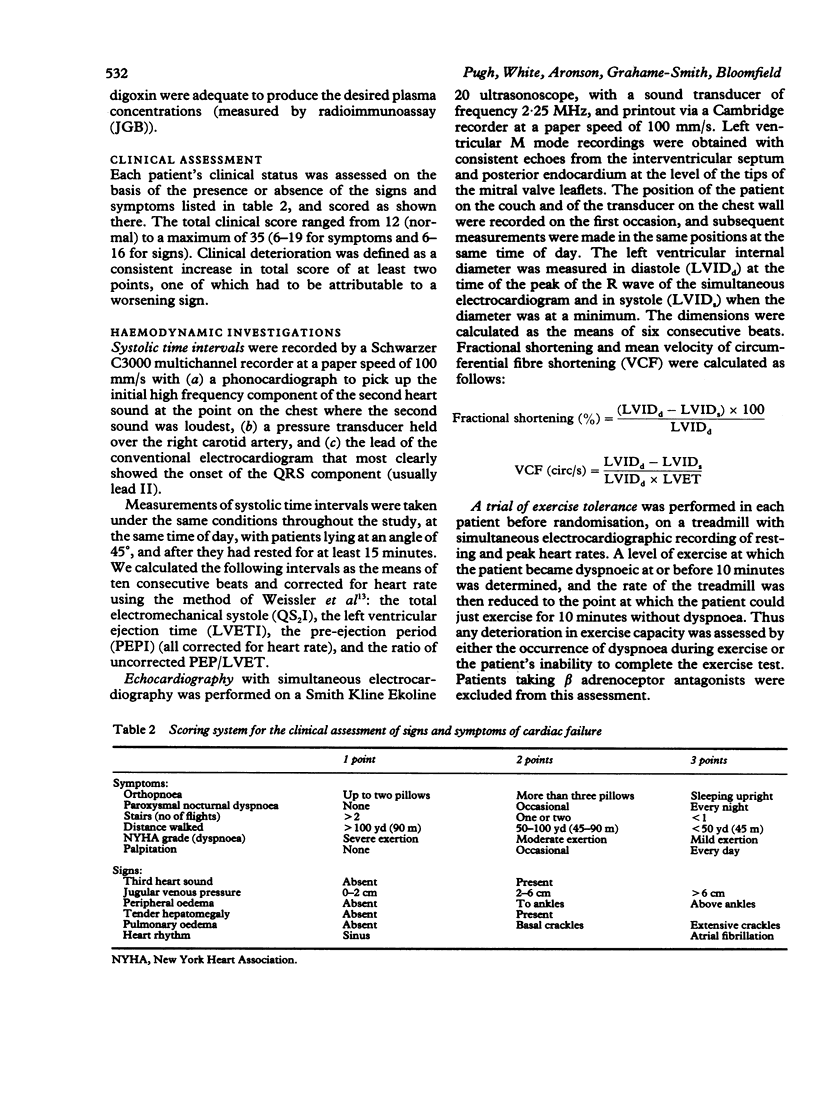
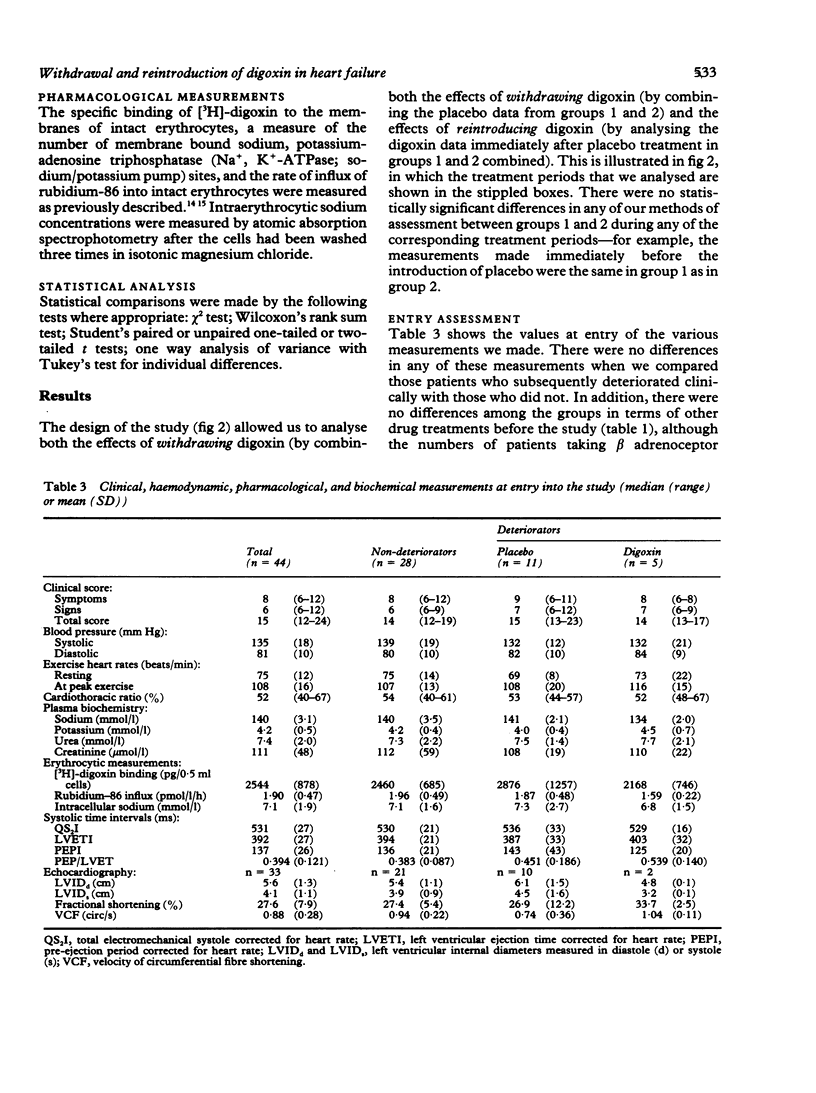
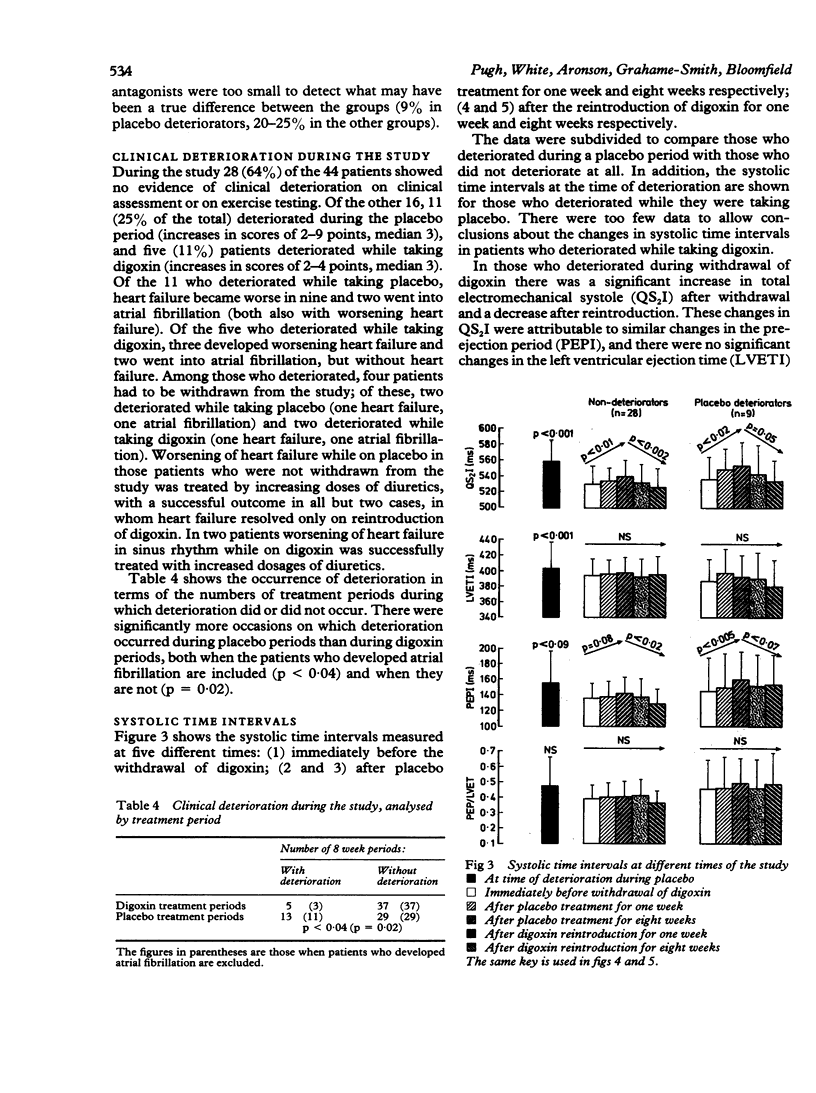
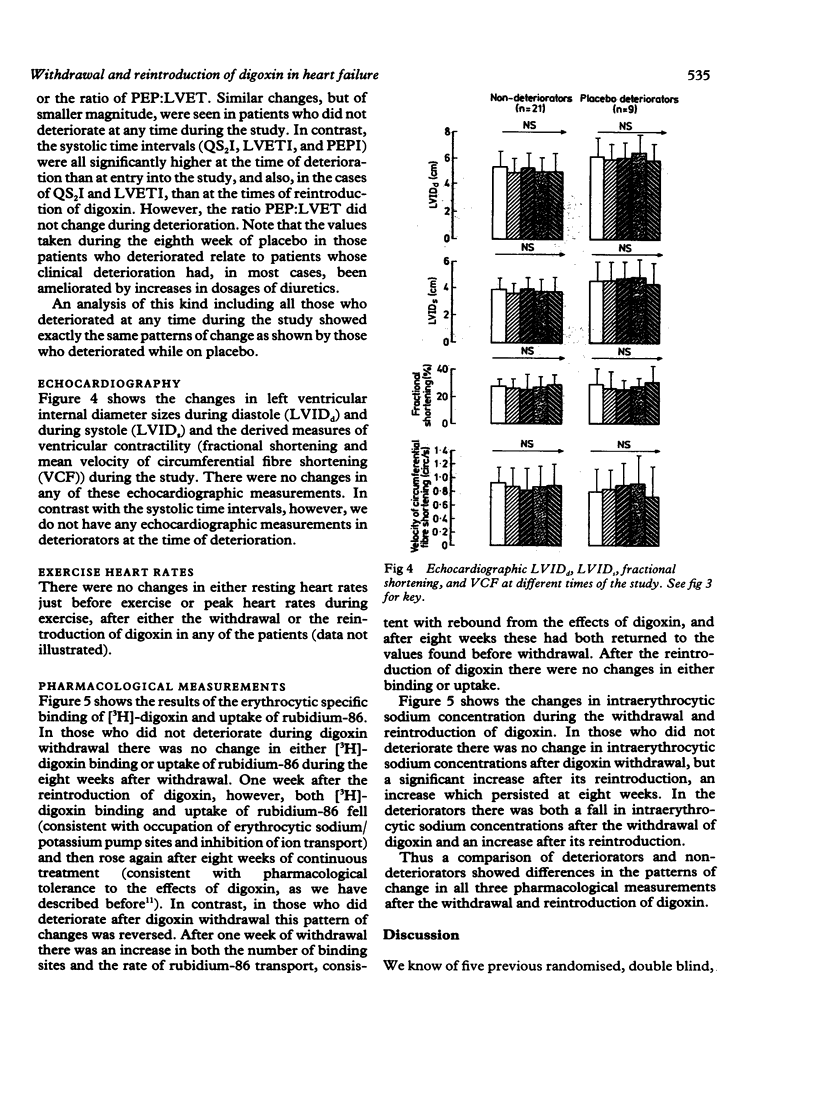
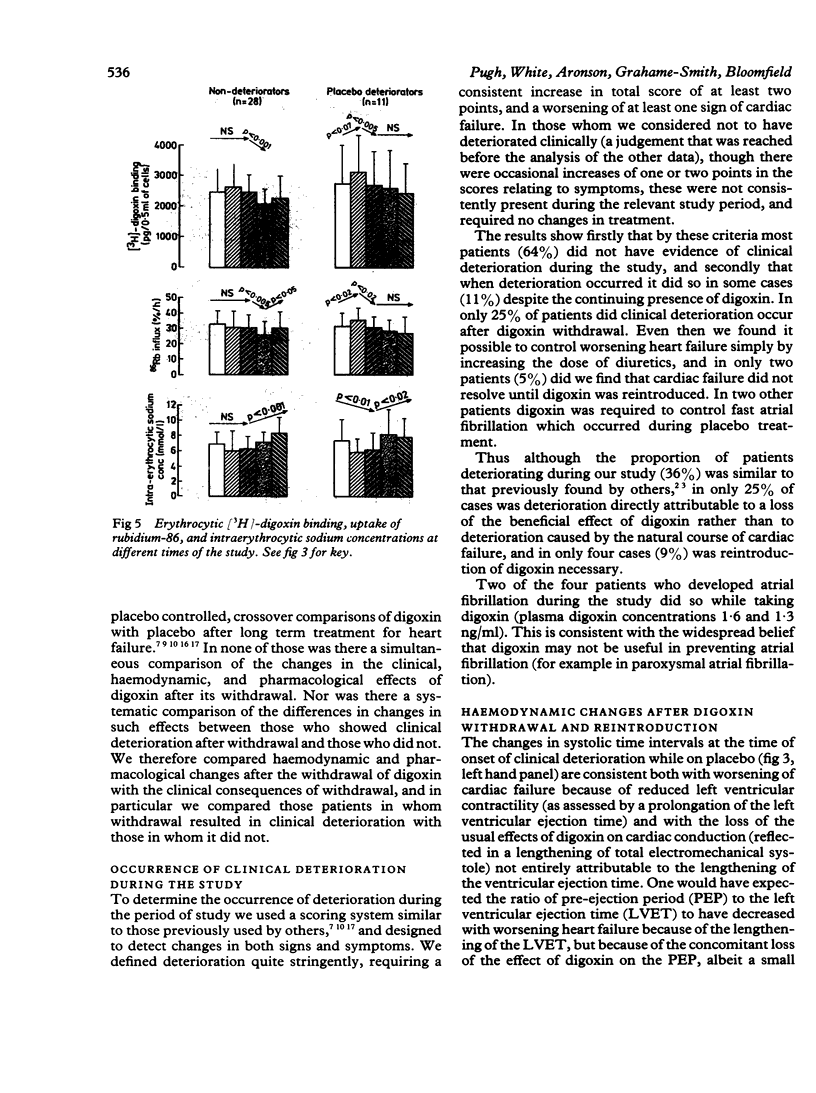


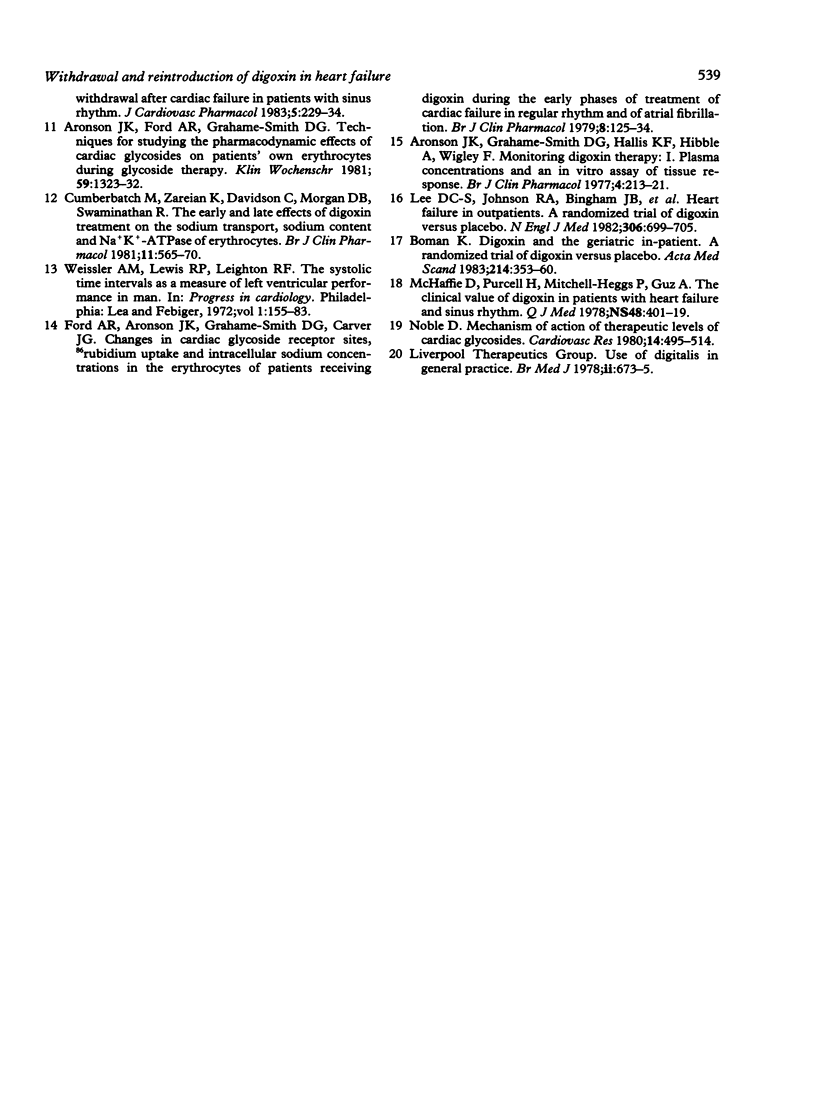
Selected References
These references are in PubMed. This may not be the complete list of references from this article.
- Aronson J. K., Ford A. R., Grahame-Smith D. G. Techniques for studying the pharmacodynamic effects of cardiac glycosides on patients' own erythrocytes during glycoside therapy. Klin Wochenschr. 1981 Dec 15;59(24):1323–1332. doi: 10.1007/BF01720552. [DOI] [PubMed] [Google Scholar]
- Aronson J. K., Grahame-Smith D. G., Hallis K. F., Hibble A., Wigley F. Monitoring digoxin therapy: I. Plasma concentrations and an in vitro assay of tissue response. Br J Clin Pharmacol. 1977 Apr;4(2):213–221. doi: 10.1111/j.1365-2125.1977.tb00697.x. [DOI] [PMC free article] [PubMed] [Google Scholar]
- Boman K. Digoxin and the geriatric in-patient. A randomized trial of digoxin versus placebo. Acta Med Scand. 1983;214(5):353–360. doi: 10.1111/j.0954-6820.1983.tb08608.x. [DOI] [PubMed] [Google Scholar]
- Cumberbatch M., Zareian K., Davidson C., Morgan D. B., Swaminathan R. The early and late effects of digoxin treatment on the sodium transport, sodium content and Na+K+- ATPase or erythrocytes. Br J Clin Pharmacol. 1981 Jun;11(6):565–570. doi: 10.1111/j.1365-2125.1981.tb01172.x. [DOI] [PMC free article] [PubMed] [Google Scholar]
- Dobbs S. M., Kenyon W. I., Dobbs R. J. Maintenance digoxin after an episode of heart failure: placebo-controlled trial in outpatients. Br Med J. 1977 Mar 19;1(6063):749–752. doi: 10.1136/bmj.1.6063.749. [DOI] [PMC free article] [PubMed] [Google Scholar]
- Fleg J. L., Gottlieb S. H., Lakatta E. G. Is digoxin really important in treatment of compensated heart failure? A placebo-controlled crossover study in patients with sinus rhythm. Am J Med. 1982 Aug;73(2):244–250. doi: 10.1016/0002-9343(82)90186-3. [DOI] [PubMed] [Google Scholar]
- Fleg J. L., Lakatta E. G. How useful is digitalis in patients with congestive heart failure and sinus rhythm? Int J Cardiol. 1984 Sep;6(3):295–305. doi: 10.1016/0167-5273(84)90189-x. [DOI] [PubMed] [Google Scholar]
- Ford A. R., Aronson J. K., Grahame-Smith D. G., Carver J. G. Changes in cardiac glycoside receptor sites, 86rubidium uptake and intracellular sodium concentrations in the erythrocytes of patients receiving digoxin during the early phases of treatment of cardiac failure in regular rhythm and of atrial fibrillation. Br J Clin Pharmacol. 1979 Aug;8(2):125–134. doi: 10.1111/j.1365-2125.1979.tb05810.x. [DOI] [PMC free article] [PubMed] [Google Scholar]
- Gheorghiade M., Beller G. A. Effects of discontinuing maintenance digoxin therapy in patients with ischemic heart disease and congestive heart failure in sinus rhythm. Am J Cardiol. 1983 May 1;51(8):1243–1250. doi: 10.1016/0002-9149(83)90293-x. [DOI] [PubMed] [Google Scholar]
- Griffiths B. E., Penny W. J., Lewis M. J., Henderson A. H. Maintenance of the inotropic effect of digoxin on long-term treatment. Br Med J (Clin Res Ed) 1982 Jun 19;284(6332):1819–1822. doi: 10.1136/bmj.284.6332.1819. [DOI] [PMC free article] [PubMed] [Google Scholar]
- Lee D. C., Johnson R. A., Bingham J. B., Leahy M., Dinsmore R. E., Goroll A. H., Newell J. B., Strauss H. W., Haber E. Heart failure in outpatients: a randomized trial of digoxin versus placebo. N Engl J Med. 1982 Mar 25;306(12):699–705. doi: 10.1056/NEJM198203253061202. [DOI] [PubMed] [Google Scholar]
- McHaffie D., Purcell H., Mitchell-Heggs P., Guz A. The clinical value of digoxin in patients with heart failure and sinus rhythm. Q J Med. 1978 Oct;47(188):401–419. [PubMed] [Google Scholar]
- Noble D. Mechanism of action of therapeutic levels of cardiac glycosides. Cardiovasc Res. 1980 Sep;14(9):495–514. doi: 10.1093/cvr/14.9.495. [DOI] [PubMed] [Google Scholar]
- Sommers D. K., Reitz C. J., Koch Z., Avenant J. C. Digoxin withdrawal in patients with sinus rhythm. S Afr Med J. 1981 Aug 8;60(6):239–240. [PubMed] [Google Scholar]
- Taggart A. J., Johnston G. D., McDevitt D. G. Digoxin withdrawal after cardiac failure in patients with sinus rhythm. J Cardiovasc Pharmacol. 1983 Mar-Apr;5(2):229–234. doi: 10.1097/00005344-198303000-00011. [DOI] [PubMed] [Google Scholar]


